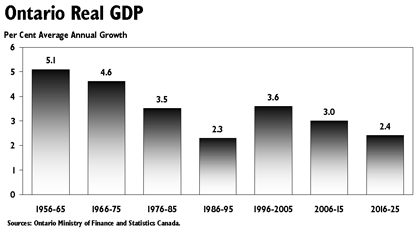: Toward 2025: Assessing Ontario's Long-Term Outlook
Highlights
Province of Ontario
Ministry of Finance
Why the Ontario Government is Releasing this Report
|
|
|
|
Summary: Demographic Projections and Implications
|
Summary: Long-Term Projection of Ontario's Economic Growth
|
Summary: Strengthening Productivity Growth
|
Summary: Drivers of Future Health Care Costs
|
Summary: Intergovernmental Finances
|
Summary: Ontario's Long-Term Fiscal Prospects
|


